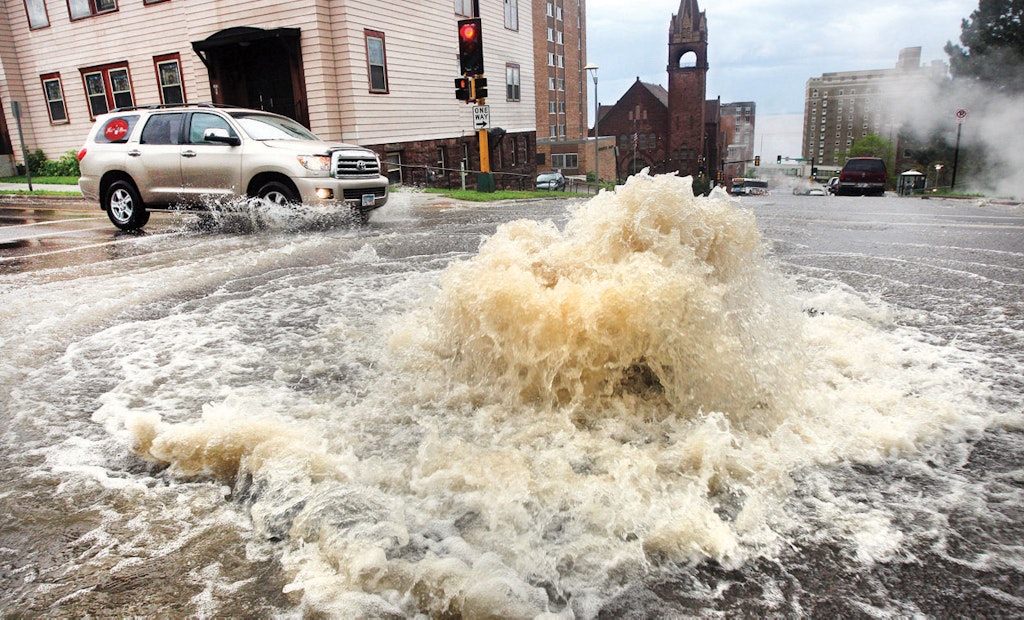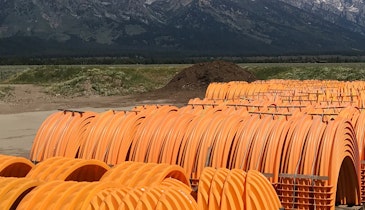
Interested in Cleaning?
Get Cleaning articles, news and videos right in your inbox! Sign up now.
Cleaning + Get AlertsDamaged infrastructure. Water-quality concerns. Sewage backups. The results of combined sewer overflows, sanitary sewer overflows and excess stormwater runoff can cause permanent damage. Properly managing these problems can save your utility time, money and the occasional headache.
For instance, several years ago in South Bend, Ind., more than 2 billion gallons of untreated sewage was discharged into the St. Joseph River during the course of 80 rainfall events. The city implemented a cloud-based program, which created a color-coded map to show crew members areas that needed the most attention. By mid-2012, the city estimated that simply using existing infrastructure in a more efficient way helped offset more than $100 million in capital infrastructure cost.
In Seattle, Wash., where as many as 6 million gallons of stormwater runoff can discharge into local waterways in a 24-hour period, the city knows firsthand the devastation caused by CSOs and SSOs. Although the city has been actively fighting CSOs since the 1960s, it is an ongoing battle for Seattle Public Utilities.
Combined and sanitary sewers are more likely to overflow following several days of rain or during severe storms, while stormwater runoff discharges happen every time it rains and frequently in much higher volumes.
A wastewater treatment plant upgrade could reduce the frequency of CSOs, but your budget might not allow for such an expense. Other solutions include adding green infrastructure, which reduces stormwater runoff, and expanding or rehabilitating aging gray infrastructure to better handle increased flows or overwhelming rainfall.
However, being prepared and understanding the necessary steps to handle problems are the best solutions to managing overflows, says Susan Stoltzfus, strategic advisor of communications and public involvement at SPU.
“In Seattle, CSOs are often 90 percent stormwater,” she says. “By assessing the environmental impact of stormwater runoff, we can demonstrate which projects make the most sense for us to pursue first.”
Utilities can use several methods to prevent sewer overflows. SPU uses a three-pronged strategy to control CSOs, SSOs and stormwater runoff:
1. Fix it first — repair damaged infrastructure that’s causing problems.
2. Keep stormwater out of the system.
3. Store whatever water is left.
“This approach describes working from the most cost-effective to the most expensive types of projects in order to prevent CSOs,” says Frank McDonald, maintenance planning and scheduling manager at SPU.
The first step includes retrofit projects, which are relatively simple capital improvements within the existing system. For instance, adding a hydrobrake or raising a weir at wastewater treatment facilities can balance flows and control flooding.
The second phase outlines cost-effective green infrastructure projects that manage stormwater volume by keeping it out of the combined system, preventing CSOs. Areas where supplemental green stormwater infrastructure is built also are healthier and more sustainable.
The final step includes necessary storage projects to meet regulatory standards. “These are the most impactful and expensive types of capital projects, so we look initially at the first two strategies before we pursue a storage project,” McDonald says.
Looking at the big picture, an overhauled maintenance program can help your utility prioritize vulnerable parts of the system to improve maintenance and keep a closer eye on overflows. For example, says McDonald, if maintenance data and GIS information indicate an increased risk of an SSO, more frequent pipeline cleaning in that area can minimize — or prevent — an overflow before it happens.
While the three-step strategy to manage CSOs, SSOs and stormwater has its benefits, public education also plays a major role. McDonald says SPU has found that most people are completely unaware of CSOs — out of sight, out of mind. SSOs, on the other hand, are easier to educate the public on because anyone who has ever had a sewer backup understands the importance of preventing them.
“By educating people about the problem, we have engaged them in the solution,” he says. “We develop their consent to undertake these large capital projects because they understand that CSOs put their quality of life at risk by putting the health of the local waterway at risk.
“We also need public education to get our customers to take certain actions. We want as many people as possible to build rain gardens and install cisterns to manage their own runoff and keep stormwater out of the combined system. Once people understand the problem, and their role in it, they are usually more than willing to help.”
Moving forward
If your utility is up against similar overflow issues, and you’re not sure where to begin, McDonald recommends getting everyone involved in developing a comprehensive management program.
“Start planning now and work to engage as many partners as possible,” he says. “These partners could include regulators, utility departments, other city and county agencies, nonprofit organizations that have a mission to protect water quality, and elected officials. Think ahead about the training your operations and maintenance staff may need.
“Manage your existing system as efficiently as possible and a plan to do that will help. Begin now to explain the need for capital investments and create a plan to fund them over the course of the program. Budgeting and scheduling skills are critical to make sure there is a smooth path to fund these improvements.”





